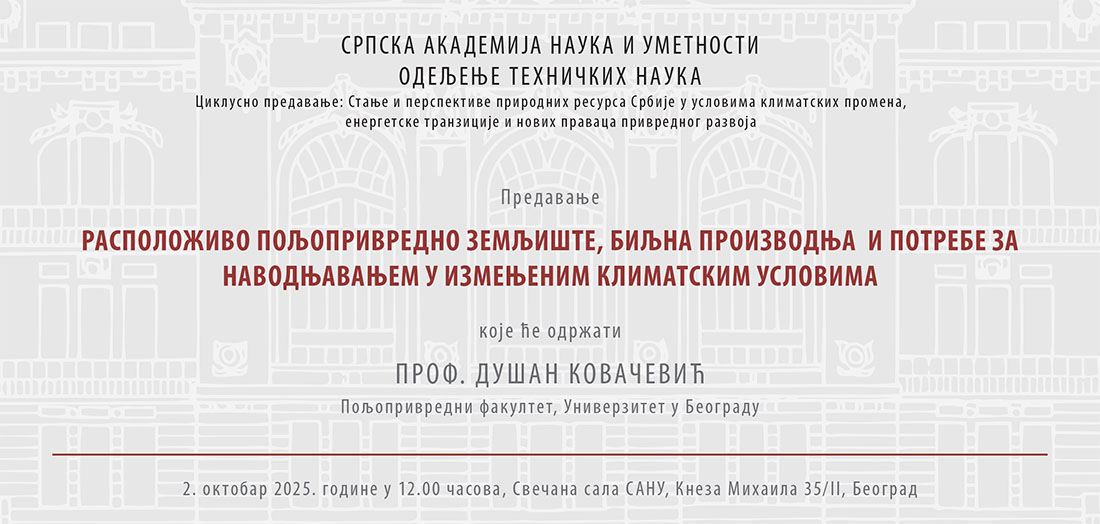Lecture ’Available Agricultural Land, Crop Production and Irrigation Needs in Changed Climate Conditions’
As part of the lecture series ’Current State and Perspectives of Natural Resources of Serbia in the Era of Climate Change, Energy Transition and New Directions of Economic Development’, Professor Dušan Kovačević, PhD, a full professor at the Faculty of Agriculture, gave a lecture titled ’Available Agricultural Land, Crop Production and Irrigation Needs in Changed Climate Conditions’ on Thursday, 2 October, at the SASA Grand Hall.
One of the goals of the sustainable agriculture movement is to create farming systems that mitigate or eliminate environmental harms associated with industrial agriculture. That aim can be realized only in flexible cultural practices in real agroecological conditions (different regional characteristics, soil types and adapted cultivars for different types of plant production).
In the structure of agricultural land, by category of use, there is evidently a lot of arable land. Arable land is more important for production field and vegetable crops. In the past decades, the share of agricultural land esspecially arable land has decreased.
Based on these facts, we must have the right answers in order to mitigate if not to completely eliminate these effects. Agronomic aspect of looking into the problem requires a good knowledge of our crop needs for primary vegetative factors as well as temperature and moisture in conventional agricultural production.
In the fight against extreme climate conditions regular and specific cultivation practices are used along with cultivars of plants much more tolerant to stress. Out of regular practices, soil tillage, particularly conservation tillage, proper fertilization, elimination of all possible mistakes in sowing should be taken into account as for optimal time and plant density. Care treatments are a useful tool which can eliminate the adverse effects and create favourable conditions for the growth and development of cultivated crops, ranging from the usual ones to some special ones that retain moisture and prevent moisture loss by encouraging its more efficient and economical use. Appropriately established crop rotations with greater diversification of crops provide better tolerance of extreme moisture.
In addition to these practices, it is important to mention irrigation as the most direct practice by which water can be added in desired quantities completely independently of precipitation. However, irrigation essentially changes all of the conditions substantially in a cropping system, so that it represents, for itself, a special practice with far-reaching effects, which should be considered.

